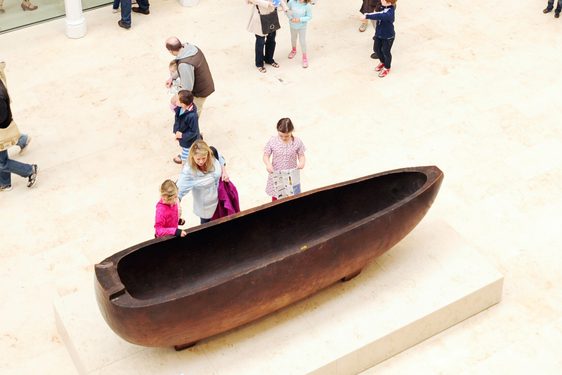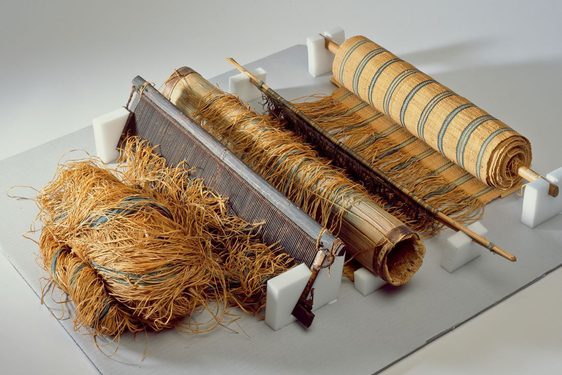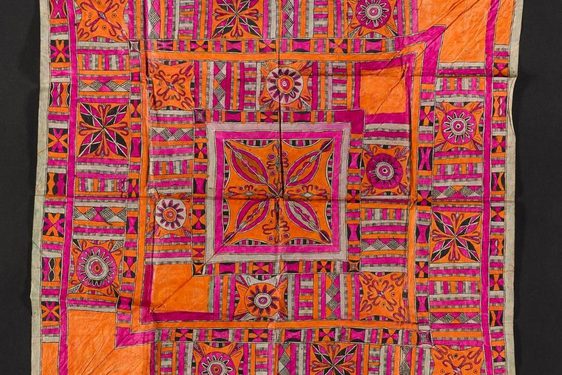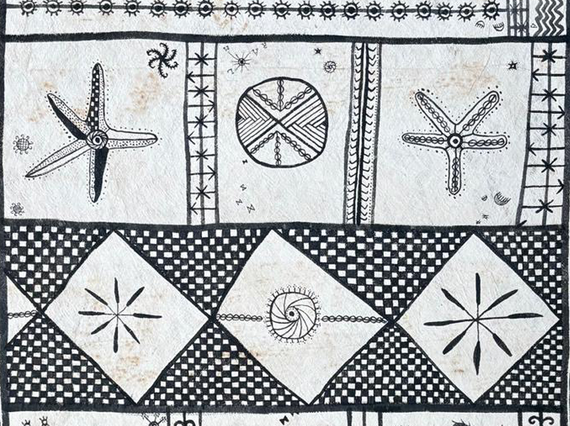
Ancestral Connections in Contemporary Niue Textiles
News Story
These two hiapo (barkcloth) artworks by artist Cora-Allan Twiss reference the natural landscape and textile traditions of Niue and Scotland.
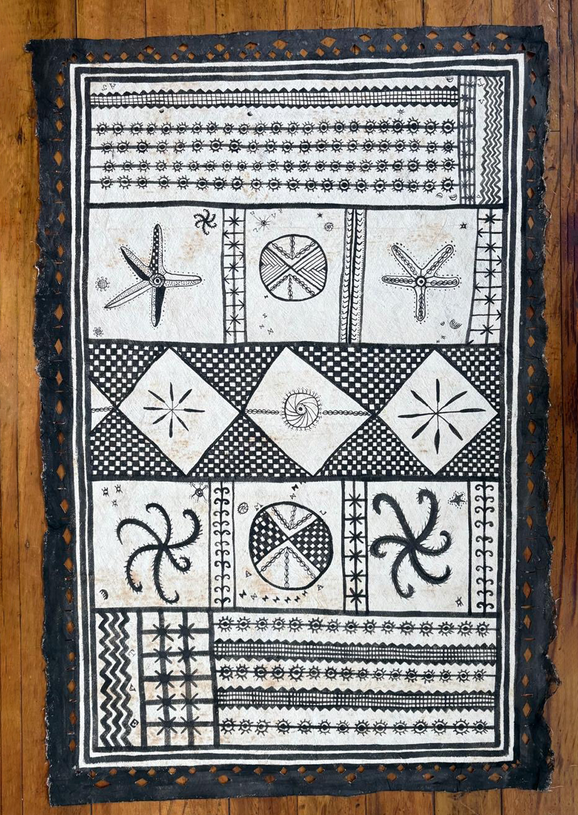
Hiapo (barkcloth) by Cora-Allan Twiss, 2025. Niue, Oceania. Museum reference V.2025.161.
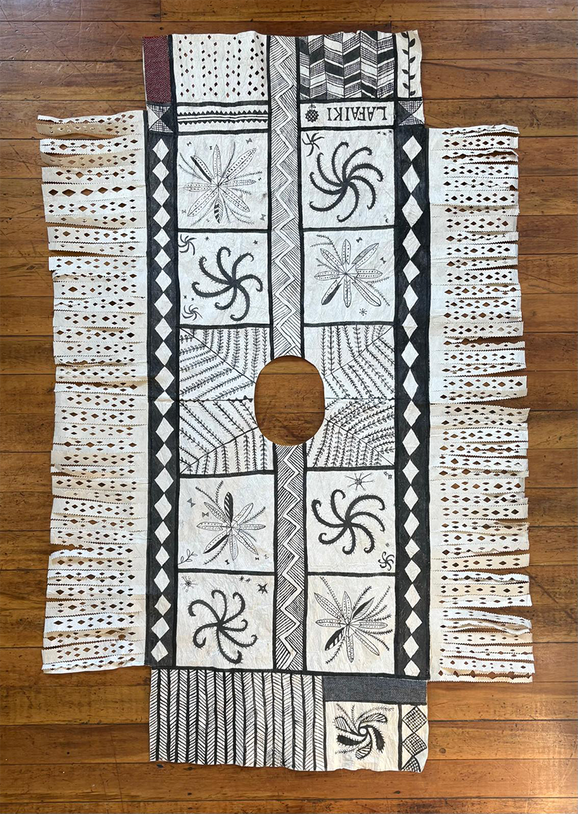
Hiapo tiputa (barkcloth poncho) including woollen textile offcuts, by Cora-Allan Twiss, 2025, Niue, Oceania. Museum reference V.2025.160.
Reviving the art of making Niue hiapo
Cora-Allan Lafaiki Twiss is a multidisciplinary artist of Māori (Ngāpuhi, Tainui) and Niue (Alofi, Liku) descent based in Auckland, Aotearoa New Zealand. She is the only living practitioner making hiapo at great scales.
Cora-Allan began making hiapo after her Niue grandparents Fotia and Vakaafi Lafaiki, asked her to make their ceremonial burial cloths from hiapo. Since then, she has shared this knowledge of making with the community in Niue. Through teaching, Cora-Allan has been the main driver in reconnecting Niue people with this previously dormant practice.
Niue hiapo is like a time capsule giving you an artist’s interpretation of the land, the sea and the people from their era. Each pattern is determined by the maker, and how they see a flower, leaves and patterns from traditional weaving or carving.
Cora-Allan Twiss
The creativity of each maker contributes greatly to the diverse compositions of traditional hiapo, making it look noticeably different from other Pacific barkcloth.
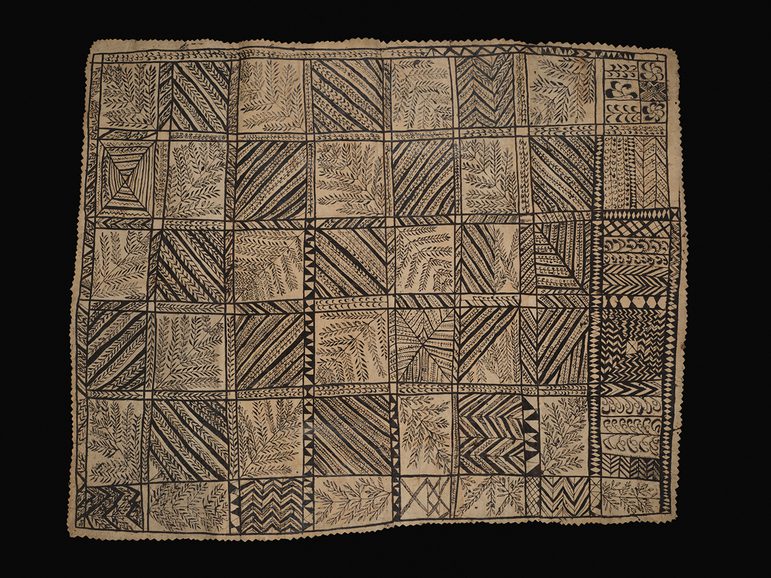
Section from hiapo (barkcloth) painted with geometric and naturalistic designs in a grid pattern. Museum reference A.1873.51.8.
Hiapo is made from the inner bark of ata (paper mulberry). It is soaked, beaten out, dried and then decorated with plant based inks. Notable for its freehand motifs and often featuring writing, hiapo making is thought to have gone dormant by the 1900s.
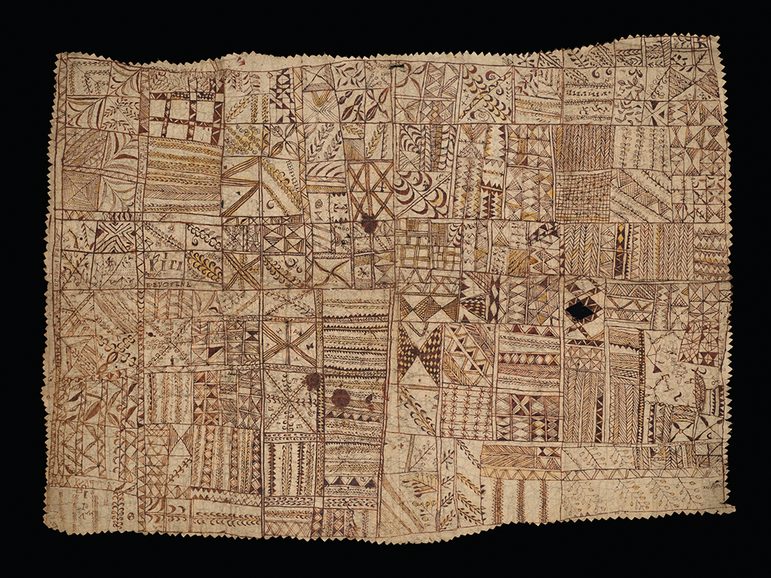
Hiapo (barkcloth) painted with geometric and naturalistic designs and text with serrated edges. Museum reference A.1895.356.
Cora-Allan’s hiapo artworks deconstruct and reconstruct the decorative elements of the traditional form. She mixes delicate botanical drawings and abstract patterns to create a contemporary interpretation. Cora-Allan has spent years visiting with hiapo held in museum collections around the world. With her Nana, she produced the book ‘Hiapo: A Collection of Patterns and Motifs. The book breaks down the individual motifs found on hiapo, creating a resource for future generations.
Image gallery
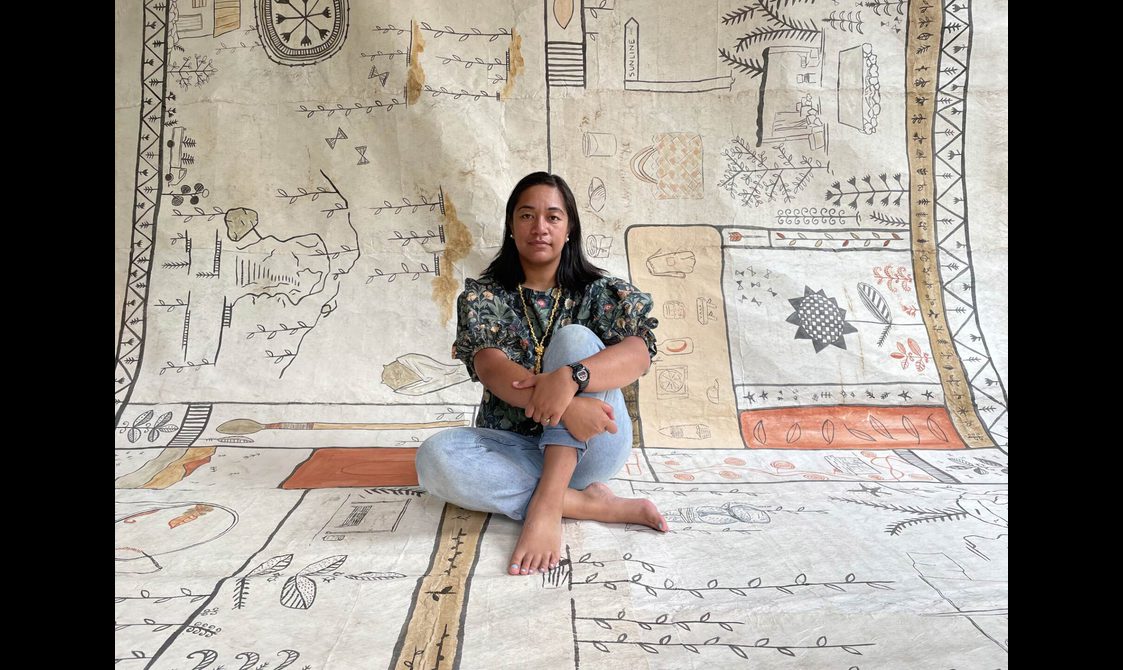
Cora-Allan Niue sits on a large piece of hiapo.
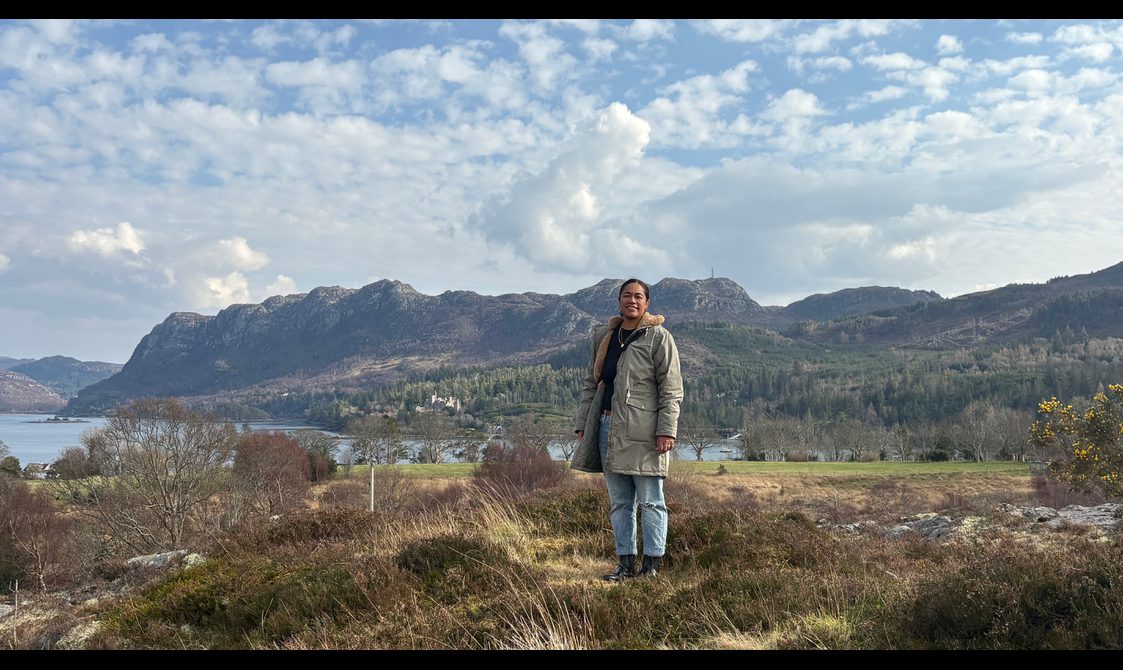
Artist Cora-Allan Twiss in Plockton.
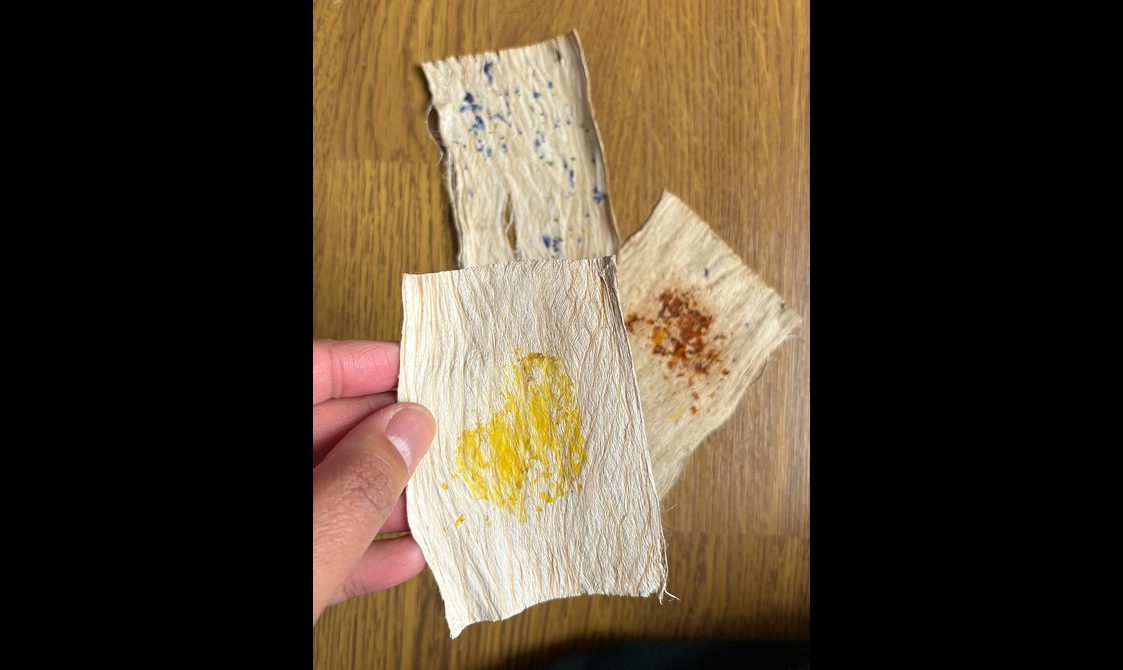
Experiments with colour by applying local Scottish plants, in the places Cora-Allan visited, to hiapo.
Niue in Scotland
In 2025 Cora-Allan was the recipient of a British Council Culture Through Connections grant. As part of the project, she visited Niue taoga (cultural treasures) in museums in Scotland including National Museums Scotland. Talking about her trip to the taoga in Scotland, Cora-Allan said:
The visit allowed me to research and meet the taoga Niue and find some beautiful surprises that are often only found by traditional makers from our communities, living and breathing knowledge holders. These taoga were created by skilled ancestors who knew them intimately.
Cora-Allan Twiss
National Museums Scotland cares for a small but historically significant collection of 42 taoga from Niue. All of the taoga, except for one, were collected during the colonial period. Within this collection are two large pieces of Niue hiapo and one hiapo tiputa. The tiputa was donated to what was then the Edinburgh Museum of Science and Art (now National Museums Scotland) in 1870 by J G Cruickshanks. Hiapo tiputa are normally made for individuals. The tiputa includes handwritten script at the base of both the front and the back. The script possibly notes who the maker was or who the original owner of the tiputa was.
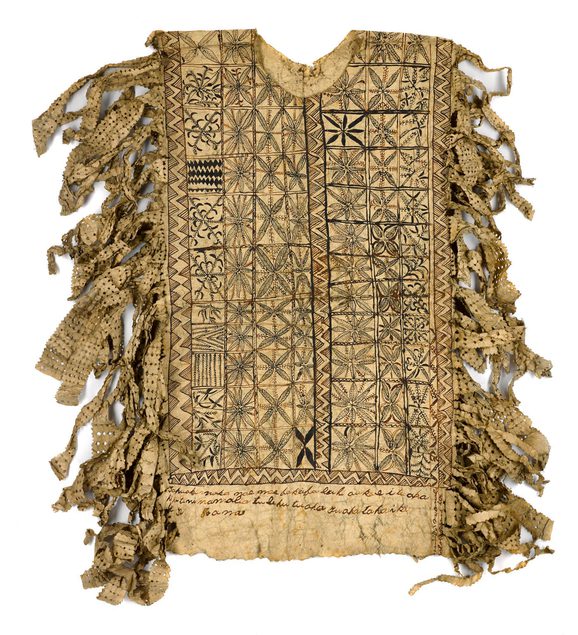
Hiapo (barkcloth) tiputa with decoration on the front and back including text, and pierced tassels. Museum reference A.1870.38.1.
One of the larger pieces of flat hiapo was donated by missionary Reverend George William Lawes. Lawes was posted on Niue from 1868-1872. Lawes aimed to educate the British public about the world through cultural artefacts. He acquired objects from the places he was stationed in the Pacific, collecting on behalf of the London Missionary Society.
The other piece of hiapo was purchased for the national collection in 1895 from Tahitian Princess Titaua Marama Salmon Brander Darsie. Titaua lived in Anstruther with her second husband George Darsie. Titaua and her first husband John Brander ran a trading business. They acquired cultural artefacts from across the Pacific through their business and as a result of Titaua’s social status.
Since the 1970s, National Museums Scotland has developed its collection of contemporary art from Oceania and North America. We work together with artists to add to the National Collection. This contemporary engagement often challenges and addresses the historic collection's colonial histories.
National Museums Scotland as an archive
Hiapo is the collection of many plants, almost like maps they reflect Niue and the landscape.
Cora-Allan Twiss
Cora-Allan's new artworks have been produced in response to the Niue hiapo collections at National Museums Scotland. The works also reflect her experience of visiting Scotland. Cora-Allan travelled to Plockton with Museum staff where they rowed the 'Plockton Community Boat'.
The boat was built by local artist Malcolm Mackenzie, as part of a project with Skye based Atlas Arts, on the sea lochs around Plockton. During this trip Cora-Allan made small sketches of the Scottish landscape as viewed from the sea. She was also gifted off-cuts of woollen textiles from Skye weavers.
When reflecting on her trip, Cora-Allan said:
Meeting the people and seeing the land from different perspectives such as the whenua (land) and moana (ocean) have influenced my lens on how I see a place. Whether it is via car, a train or on a canoe the experience of moving through the land captivates the way in which I depict colour, textures and often becomes a place for me to think about the history and people within the lands I visit in ways that connect to indigenous ideas of being.
Cora-Allan Twiss
Cora-Allan travelled across Scotland, and was particularly inspired by the highlands:
The highlands for me were a place that made me contemplate on the vast land of Scotland and the rich histories that are spread throughout the land. The overwhelming landscape of the highlands is something that reminds me of parts of Aotearoa so capturing parts of these in smaller works too has been a nice way to honour my time spent with new friends.
Cora-Allan Twiss
Both of the artworks that are now part of the national collection are hand painted using natural pigments onto hiapo made from ata sourced in Niue. The motifs on the hiapo and the tiputa reference the patterns and the text seen on the Niue hiapo in Scotland. The patterns also reference Cora-Allan’s experience of the Scottish landscape.
The new tiputa is the first time that Cora-Allan has added crimped fringing, reflecting the style of fringing seen on the tiputa held at the museum. The tiputa also features Cora-Allan’s family name ‘Lafaiki’ written in the same style script as seen on other hiapo. Small pieces of colourful woollen textiles from Skye weavers have also been sewn into two panels.
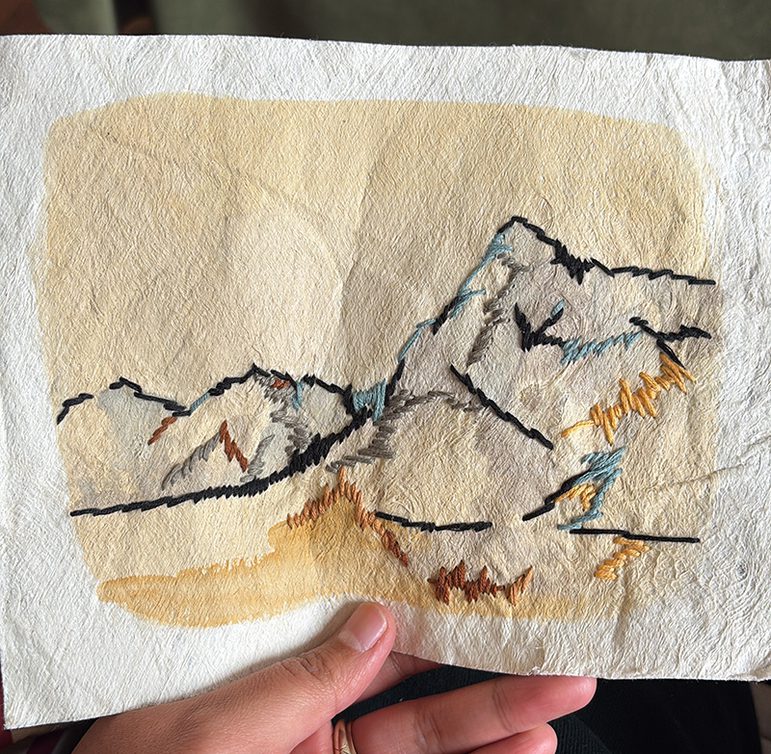
An embroidered and painted sketch of the Scottish landscape on hiapo made during the March 2025 trip.
On the project, Cora-Allan reflects:
My works offer a snapshot into how I was able to visit the taoga held in museum collections and how they are being cared for. The landscape Polaroid images I took translated nicely onto hiapo as special sites that I visited alongside flora and fauna that was beaten into the barkcloth as a way of capturing spirit from the landscape. It is always a challenge to use patterns that are foreign to the landscape but it is nice to create works with patterns that are held in the collections already bringing the taoga to the forefront and through a new surface on a contemporary made piece.
Cora-Allan Twiss
Written by

Dr Ali Clark
Senior Curator, Oceania
